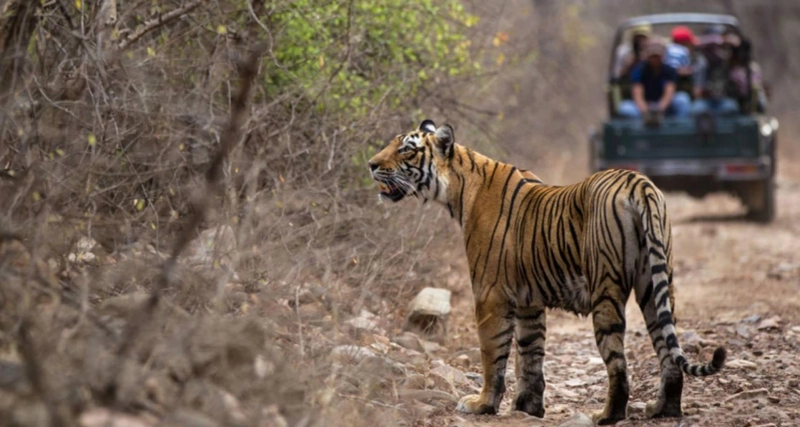Tiger initiative, launched in 1973 to protect the endangered Bengal tiger. Today, there are more than 50 tiger reserves across the country, each offering a unique safari experience.
Some of the most popular tiger reserves include Ranthambore in Rajasthan, Jim Corbett in Uttarakhand, Bandhavgarh and Kanha in Madhya Pradesh, and Sundarbans tiger safari India in West Bengal. Each of these reserves boasts a distinct landscape, from the arid forests of Ranthambore to the dense mangroves of Sundarbans, providing diverse habitats for tigers and other wildlife.
The Safari Experience
A tiger safari in India is not just about spotting tigers; it's about immersing yourself in the wilderness. Safaris are typically conducted in open jeeps or canters, allowing visitors to navigate through the rugged terrains and dense forests. The best times for a safari are early morning or late afternoon when animals are most active.
The excitement of a safari begins as soon as you enter the reserve. The air is filled with anticipation as you listen to the guide’s instructions and the naturalist’s stories about the jungle and its inhabitants. As you venture deeper into the forest, every rustle of leaves, distant call, or movement in the underbrush could signify the presence of a tiger.
While tigers are the main attraction, these safaris offer the chance to see a wide variety of other wildlife, including leopards, sloth bears, deer, wild boars, and a plethora of bird species. The experience is further enriched by the stunning landscapes, from rolling hills and riverine forests to open grasslands and bamboo thickets.
Conservation and Responsible Tourism
Tiger safaris in India are not just about adventure; they play a crucial role in conservation. The presence of tourism in these reserves helps generate revenue that supports conservation efforts and provides livelihoods for local communities. However, it's essential that tourism is conducted responsibly to minimize the impact on the environment and the wildlife.
Visitors are encouraged to follow the guidelines set by the park authorities, such as maintaining silence, not littering, and respecting the animals' space. Photography should be done without disturbing the animals, and feeding wildlife is strictly prohibited.
Planning Your Tiger Safari
When planning a tiger safari in India, it's important to consider the best time to visit. The dry season, from October to June, is generally the best time for tiger sightings, as water sources are limited and tigers are more likely to be seen near them. Each reserve has its own peak season, so researching beforehand can enhance your chances of spotting a tiger.
Accommodations near the reserves range from luxury resorts to eco-friendly lodges, offering a range of options to suit different budgets and preferences. Booking in advance is advisable, especially during peak season, as permits and accommodations can fill up quickly.
Conclusion
A tiger safari in India is more than just a wildlife excursion; it's a journey into the heart of nature, offering a rare glimpse into the world of one of the planet's most awe-inspiring creatures. Whether you're a seasoned wildlife enthusiast or a first-time visitor, the experience of tracking a tiger in its natural habitat is one that you'll cherish for a lifetime.


